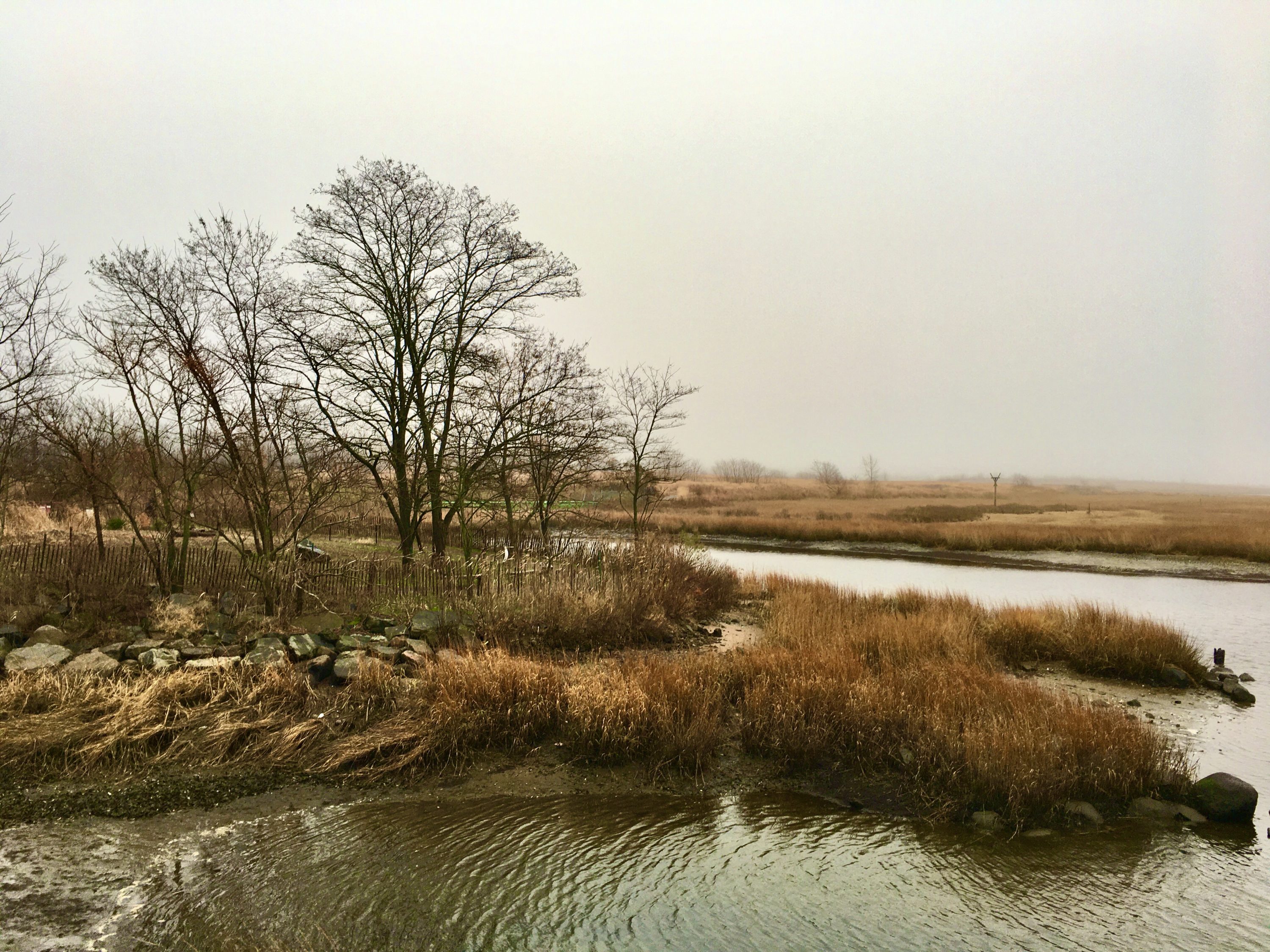A winter hike on Marine Park’s nature trails

Welcome to the wilderness, right here in Brooklyn. This is the Marine Park Preserve. Photo: Lore Croghan/Brooklyn Eagle
The wilderness is a wonderful thing — especially if you can get there on the B3 bus.
Marine Park has a nature preserve whose hiking trails make you feel like you’re far, far away from Brooklyn. In truth, you’re on Avenue U, surrounded by a busy residential neighborhood.
If you need to clear your head after too much holiday partying and/or stress, a stroll through the Marine Park Preserve’s grasslands should do the trick.
